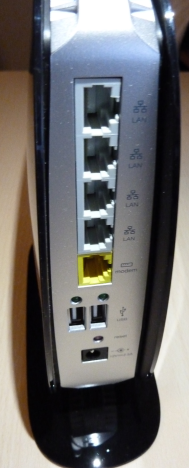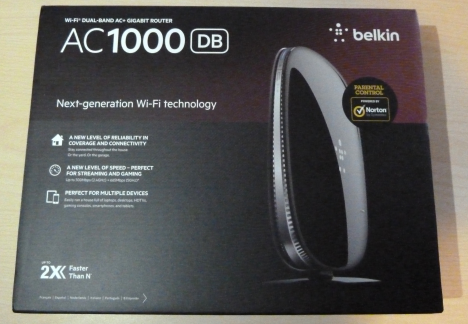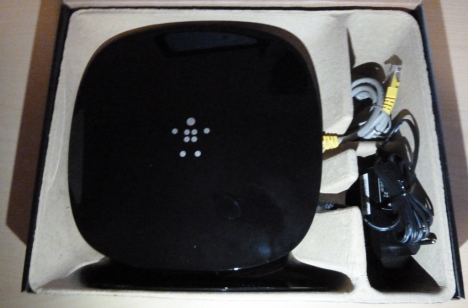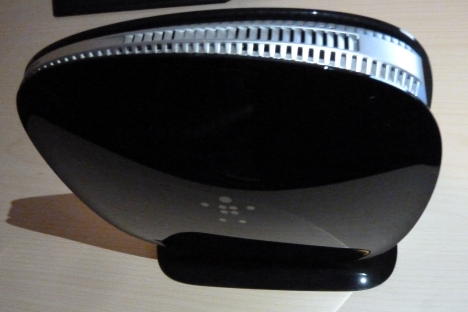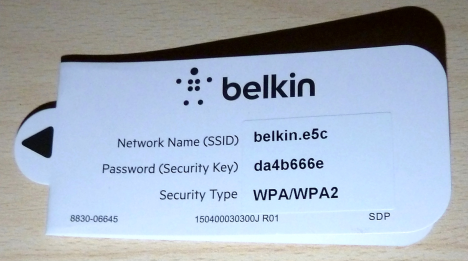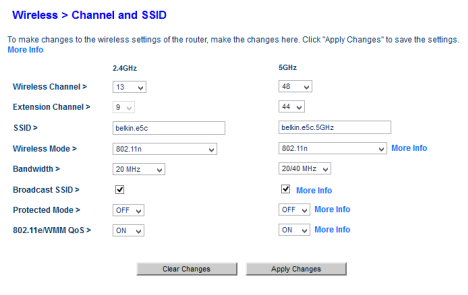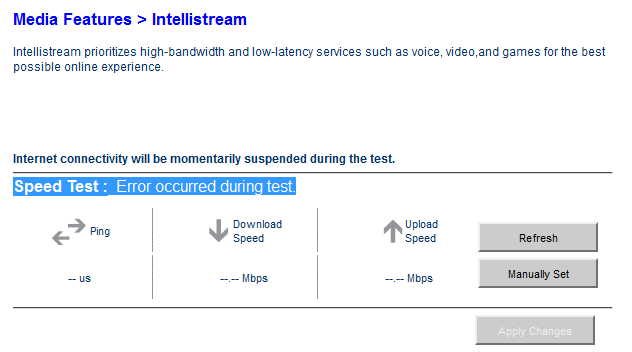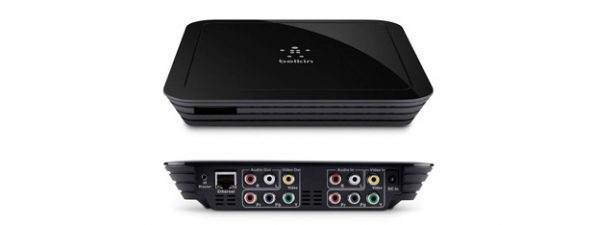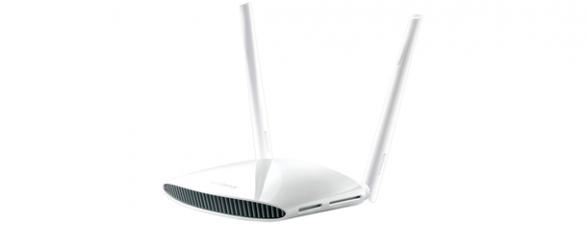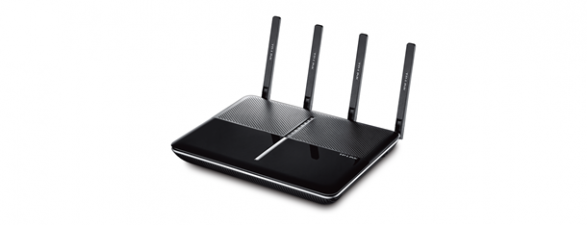
Have you noticed that many AC routers have been launched on the market in the last few months? What does AC stand for? It turns out it is the latest wireless networking standard. It is supposed to be the successor of the 802.11n standard and provide theoretical transfer speeds up to 500 Mbit/s. That's quite fast for wireless but are these AC routers any good? To start answering the question, we tested the first AC router we could get our hands on: the Belkin AC 1000 DB. Let's find out what it offers, how it works and if it is worth your money.
Hardware Specifications
What makes this Belkin router stand out is its support for the IEEE 802.11ac, a wireless computer networking standard, which is still in development. Currently, the latest version of the standard is Draft 4.0. Its approval is expected in late 2013. Other than that, it is a standard router with four LAN ports and two USB ports. It supports the Dynamic, Static, PPOE protocols for connecting to the Internet, it works both at 2.4 and 5 GHz frequencies and offers WEP, WPA and WPA2 wireless security.
At least in theory, the router provides simultaneous dual-band speeds up to 965 Mbps (300 Mbps on the 2.4 GHz frequency + 665 Mbps on 5 GHz). You can find its complete specifications on the official product page: AC 1000 DB Wi-Fi Dual-Band AC+ Gigabit Router.
Unboxing the Belkin AC 1000 DB
The packaging is pretty standard stuff: it looks good, it is easy to unbox and it contains what you would expect to find inside.
You will find the router itself, a short network cable, the power supply, a quick installation guide that doesn't go into much detail, a setup disc and a quick card with some preset settings.
Even though my picture taking skills are a letdown, I guess you can figure out by yourself that this is a pretty big router. It is heavier than others I have tested and it looks good. Also, the finishing is of better quality than with the previous family of Belkin routers.
Also, there are not many LEDs lighting up on it. Some of you will definitely appreciate that. I know I do. Devices nowadays simply have too many lights lit up all the time. 🙂
Router Setup
The initial router setup takes a short time to perform and few steps are involved. You are asked to select the country you're in, provide your ISP (Internet Service Provider) account details and that's it.
However, it doesn't mean your work ends there. There are quite a few additional steps you should do manually. First, you should change the password used to log into your router. By default the password is blank and this represents a security problem. Then, your wireless network settings are preconfigured with a set of default values, printed on the quick card found in the packaging. As shared by a few security researchers, this can represent another security issue. More details can be found here: Default WPA2 password on Belkin routers is easily worked out. You should change the network name (SSID) to something you easily recognize as your network and use a different password (security key).
The administration interface looks the same as in previous generations of Belkin routers. It is doesn't include too many advanced features but it easy to use, even if you are a novice.
At this point, I noticed an important difference versus previous Belkin models. It doesn't take as long to apply all your changes, no matter how small. Some settings require a complete restart of the router which takes about 80-90 seconds. That's a lot and in line with previous models. However, now there are quite a few changes that are minor and require only 8 to 10 seconds to get applied. A welcome improvement. I no longer had the feeling that customizing everything I need takes forever. I hope Belkin will continue to deliver improvements in this area.
Performance
I was keen to see how well this new router model performs. I test routers in my own apartment which is about 90 square meters (980 square feet) in size. First, I noticed that the signal on the 5GHz frequency fluctuates less than with other routers, including, the ASUS RT-N56U we reviewed here at 7 Tutorials. The difference isn't big but it is noticeable. If the ASUS RT-N56U was not able to deliver any signal in the very remote corners of the apartment, the Belkin AC 1000 DB was able to deliver some signal. The signal on the 2.4GHz frequency is not as strong. In contrast, it fluctuates more than with other routers I tested, including the ASUS RT-N56U. Since the 802.11ac standard works only at 5GHz, it is obvious why the Belkin engineers focused on improving the signal strength and stability for this frequency. Then, I copied some files over the network, using computers that were connected via cable. I noticed that the transfer speed was very stable, at approximately 88 MB/s (thanks to an SSD drive). Even though this was good, the maximum speed achieved was less than with other routers, which allowed transfers at 100 MB/s. I ran other tests and noticed that the wired connection was always slower than when using other routers. For example, transferring files over BitTorrent was possible only at a maximum of 3.8 MB/s instead of the 10 MB/s I achieved easily with other routers. Also, Speedtest.net revealed that my upload and download speeds were half than what I used to have with other routers: 38Mbps download speed instead of 70 Mbps and 21.51 Mpbs upload speed instead of 62Mbps. I wasn't happy by all means. Next, I transferred some large files when connected to the wireless network operating at 2.4GHz. The maximum speed achieved was 11.8MB/s when close to the router. In the remote corners of the apartment, the speed went down to 2.5 MB/s. A good result! Lastly, I transferred the same files when connected to the wireless network operating at 5GHz. The maximum speed achieved was 16 MB/s when near the router. In the most remote corners of the apartment, the speed went down to 1.8 MB/s. This is a very good result! When browsing the web, Speedtest.net did not reveal any meaningful difference between the two frequencies, at lest not when in close range to the router. Looking at the way Belkin AC 1000 DB performed, the results are mixed. The focus on providing fast wireless connectivity in the 5GHz band is very obvious and it has brought many improvements. However, the performance when using network cables leaves a lot to be desired and it is worth at least a firmware update to improve the experience.
Cool Features
The Belkin AC 1000 DB packs quite a few features you will enjoy:
-
Parental Control powered by Norton - I loved this feature. It works great and it is very effective in blocking websites. It is unfortunate though you cannot set it to block different things for different devices. You can only set a global set of rules that are applied to all devices on the network.
-
Intellistream - is a marketed as a new feature. However, it only seems to be a different way to name the standard Quality of Service (Qos) feature. What's unfortunate about it is that the automated setup doesn't work at all. You have to set it manually in order for it to work. This should be fixed in a future firmware update.
-
IPv6 support - is marketed as something new, but many routers have had this support for quite some time.
-
Self Healing - is a feature that allows you to set a regular router re-initialization, which can help eliminate issues with your network.
-
ECO MODE - allows you to disable the wireless radio at specific intervals when you know the wireless network won't be needed, to save power.
Verdict
The Belkin AC 1000 DB Wi-Fi Dual-Band AC+ Gigabit router delivers good wireless performance, especially when operating at the 5GHz frequency. Its focus on modern wireless standards such as IEEE 802.11ac and IEEE 802.11n is very evident. If you are the kind of geek who has only new devices that work well with the new wireless standards, then Belkin AC 1000 DB and its more expensive brothers that are part of the Belkin AC family, should be considered worthy alternatives. However, be mindful of its downsides related to wired network connections. If you plan to connect quite a few devices with network cables, you might not be pleased with its performance.


 11.01.2013
11.01.2013 